TEXT BY TISHARA RAJAGOPAL
PHOTOGRAPHS BY VIGNESH SIVAKUMAR
Chennai, Tamil Nadu
This brass cooking pot belonged to my maternal great-grandmother, Leela Chander, and its story was told to me by my grandmother, Sabita Radhakrishna. Referred to as a dekchi, It is a wide-mouthed pot, that sits obediently in my grandmother’s drawing room. I’ve walked past it countless times and traced my fingers across the fern that now grows wildly out of it, rarely looking down the repurposed planter.
The vessel operates in phases, just like the moon does. Some days it is a variegated grey, brown, green, and red — the permanent colour of the inside of the dekchi and its rim. However, after a polish, it is a light, almost washed-out brassy colour. But when it catches the evening light, there’s a bronze glow that emanates from it. The dekchi will then spend the next few weeks darkening, regaining its patina. It has several concentric rings and notches that run along its body, and a noticeable joint, with a teeth-like pattern, along which the parts of the dekchi were fused. The bottom, rough and uneven, has a fascinating set of orbits created by the firewood that would be used to prepare food. It moves from bronze to grey, green, and brown, on to an explosive black and red patina, and finally to brass. This pattern is also imprinted on the inside of the dekchi. It is cool to the touch and surprisingly light when picked up.

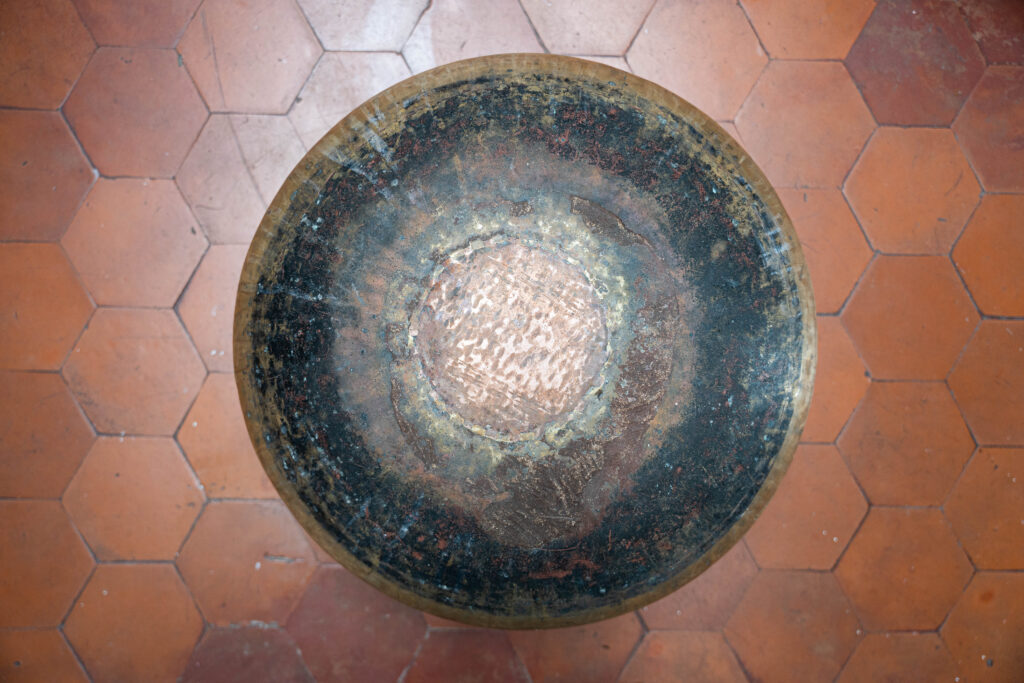
Leela, universally known as Mummy, was born in Pune in 1920. She lost her mother, Thungabai, when she was just nine years old without getting the chance to absorb the maternal counselling most girls were given at that time. But her worldly father, C. K. Sadagopan Pillai, raised her to flourish. She was ahead of her time, sporting a stylish blunt, bob haircut, dressed in frocks. A tomboy at heart, a young Leela would adventurously climb trees and play tennis. She would take swimming and horse riding lessons, and finished her schooling at one of the top colleges in Pune, Wadia College.
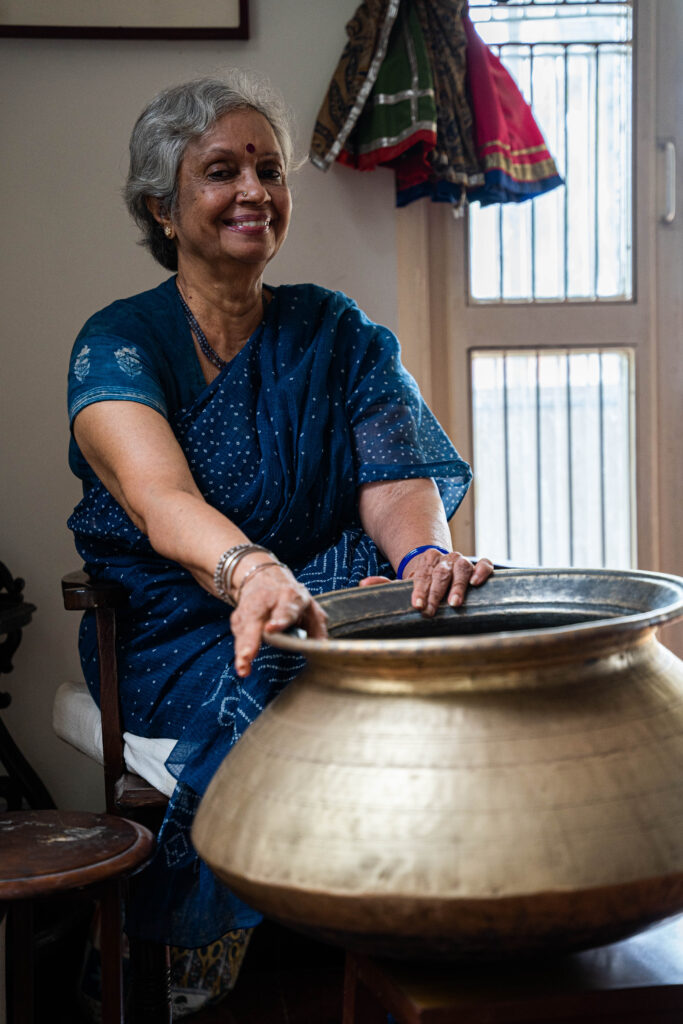
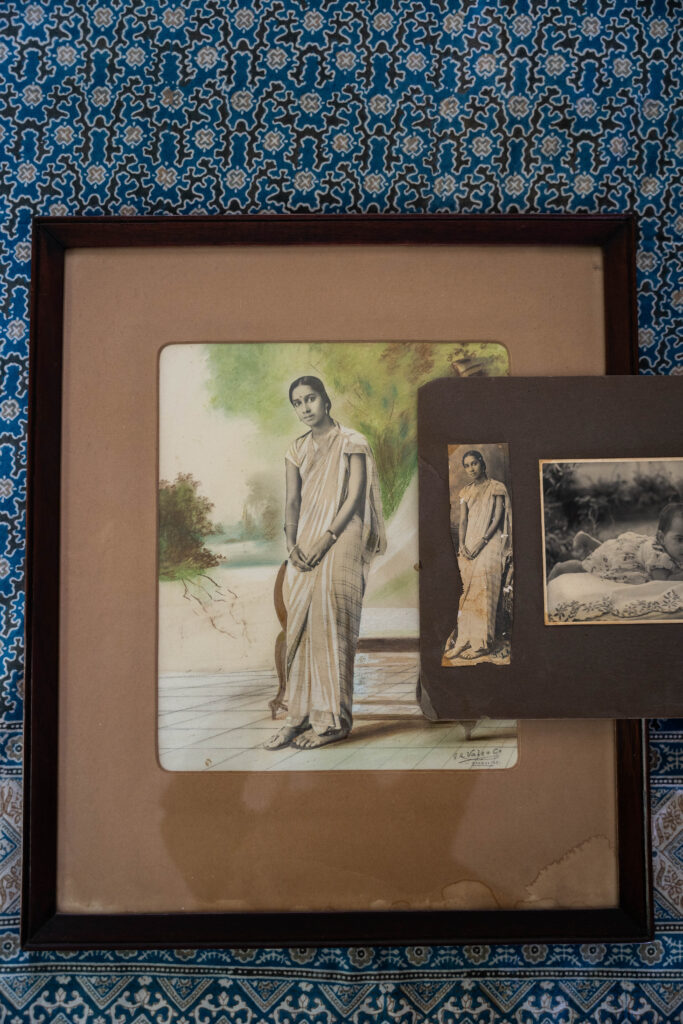
At the young age of seventeen, Leela found her husband in Dr. A. G. Chandrasekharan who was fourteen years older than her. Dr. Chander had two daughters with his first wife who passed away. The marriage made sense as Sadagopan Pillai suffered from epilepsy and wanted to ensure his daughter would be taken care of should anything happen to him. Leela cried at the thought of leaving her father and marrying into another family. She had plans to study further. Hesitant, she draped the first saree she had ever worn to welcome Dr Chander and his family when they visited her in Pune. Leela fell head over heels for the handsome, mischievous, smooth-talking doctor and so did he. Dr Chander even managed to sneak away with a picture of his bride to be with her friend. After they got married and moved to Bangalore, he reproduced the photograph — friend cropped out and a delicate-looking Leela set against a new painted backdrop.
The family loved Leela, warmly took her in, and looked after her — she was only still a teenager. But what she was not prepared for were the autocratic practices and restrictions she was expected to follow as a woman in the household. It was not correct for Leela to speak to other men and she was asked to cover her shoulder with the pallu of her saree as a sign of modesty. She wasn’t even allowed into the kitchen on account of Nanja, the male cook, working there. It was only after Nanja left did Leela step into the kitchen, thrown into the deep end, to begin learning the basics.
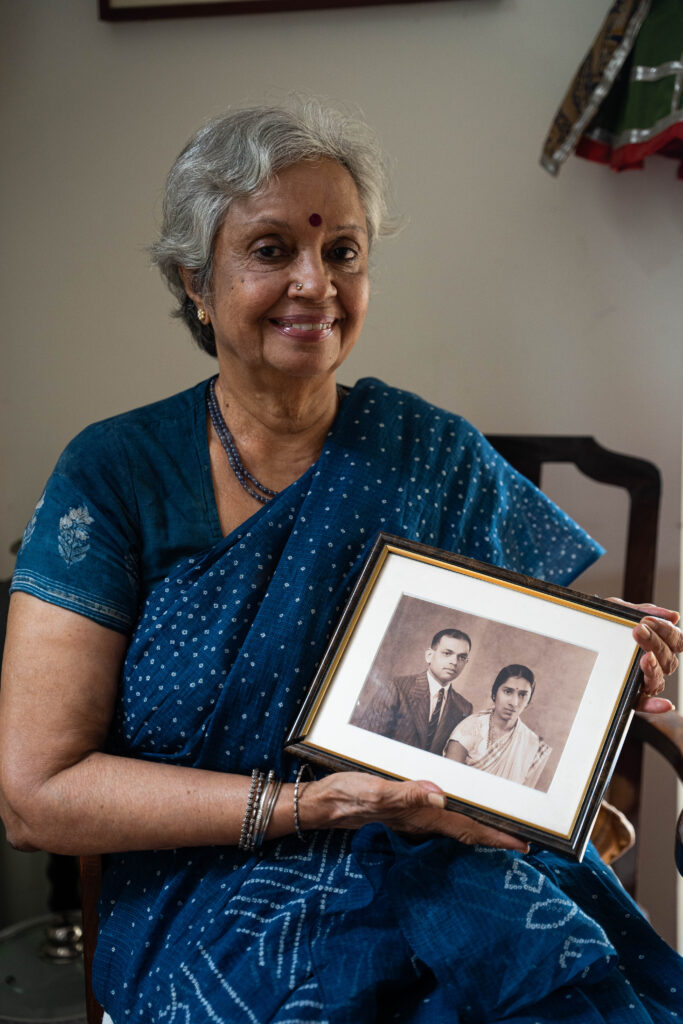
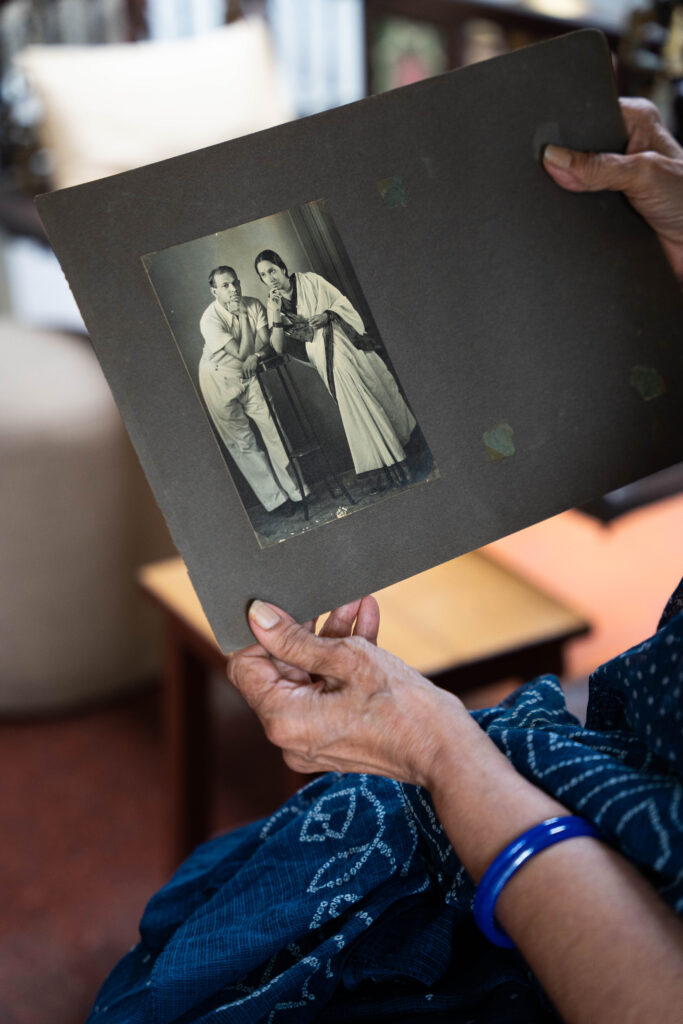
When they moved in 1942, their Mosque Road address was both a home and a huge maternity clinic. Patients would come to get treated, have surgeries, and have their babies delivered by Dr Chander. The elaborate 30-room operation involved the help of four nurses and a British matron. But Leela was in charge and responsible for running things. Through trial and error, and several blunders that would be met with fear-instilling stern looks from her husband, Leela met the standards of overwork that were placed upon her. From morning to night, she would prepare trays of food, getting her two younger daughters ready and sent to school, and whisking herself back to the kitchen to prepare food for her large family and the patients. You would rarely catch her lying down or resting and it was even more unlikely to see her wear anything but a saree. Even the half an hour she would get to rest in the late afternoon, she would sleep in a saree and wake up with no more than a crease or two.
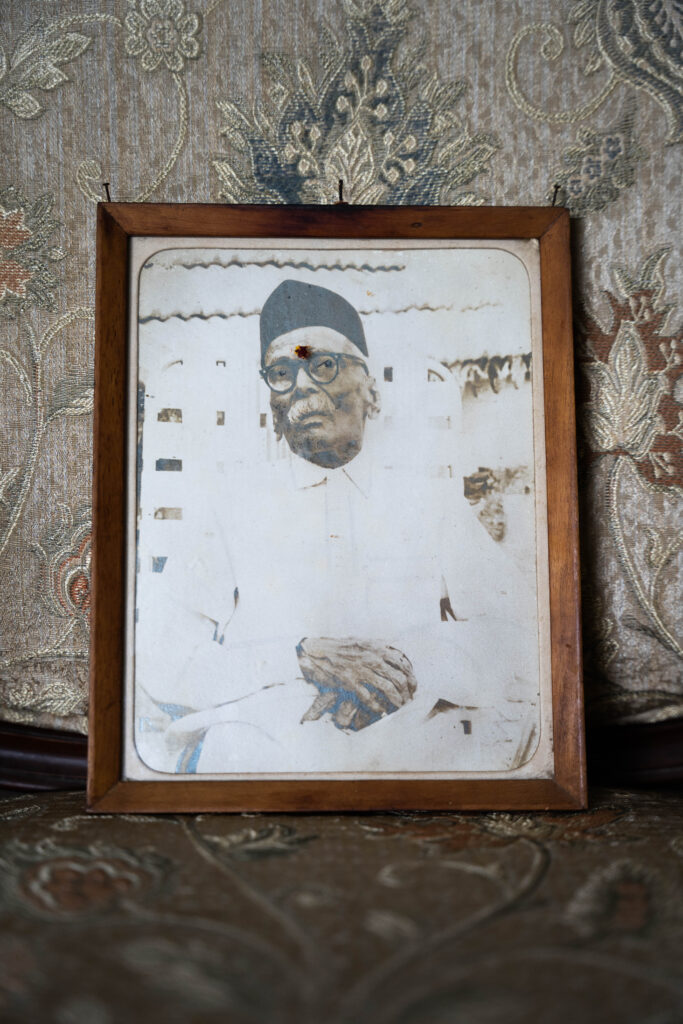
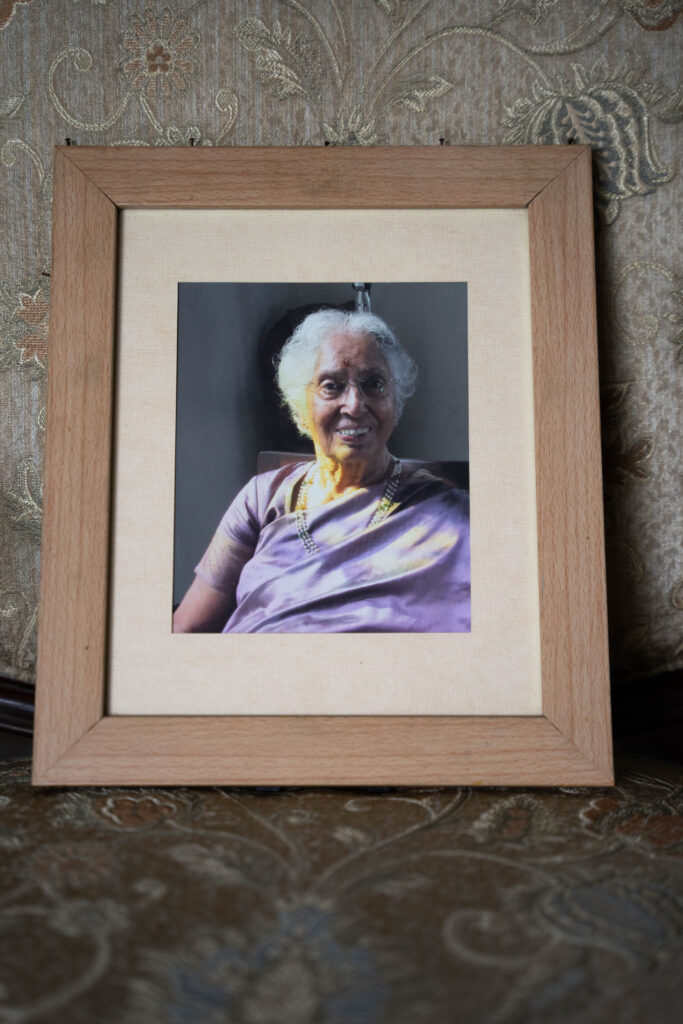
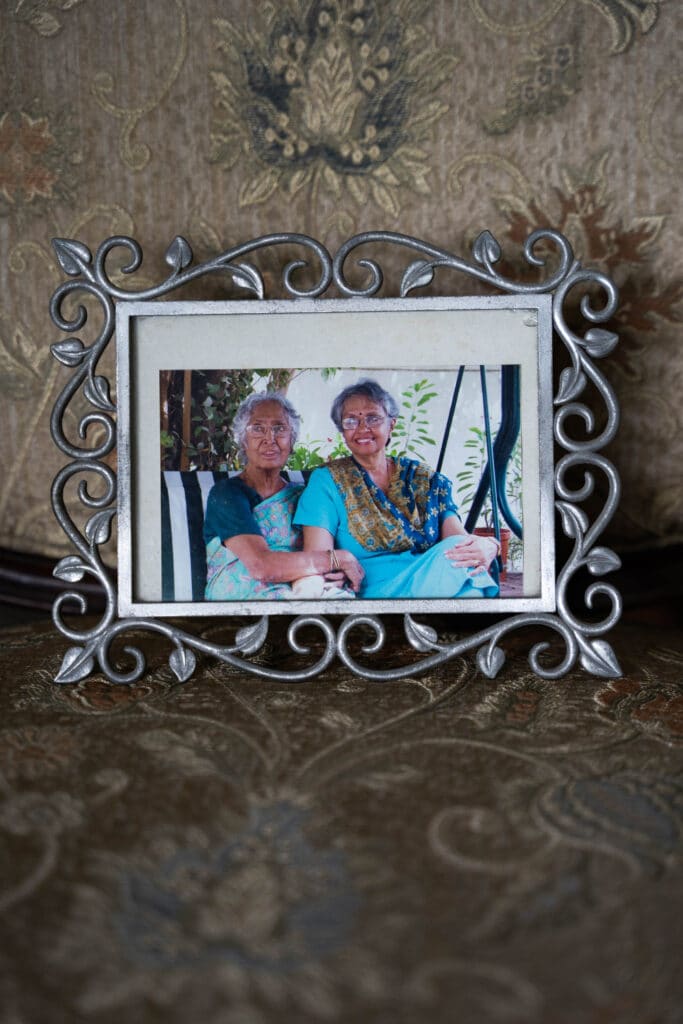

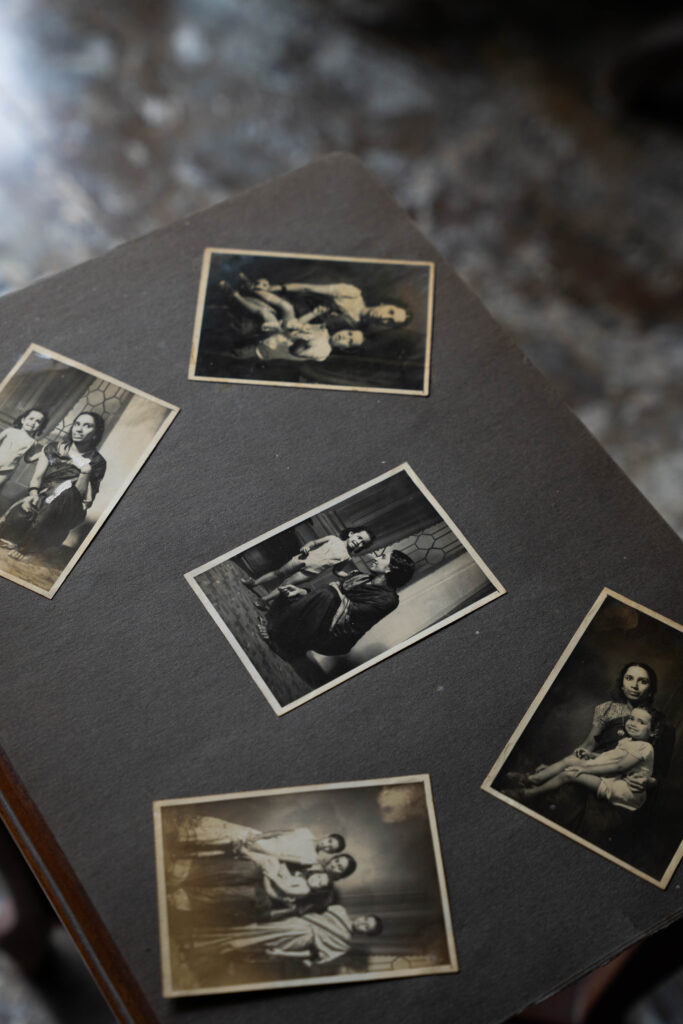
At the height of this relentless routine, Leela would prepare large feasts for special occasions; for her family of five, her elder daughters’ children and in-laws, her husbands’ aunts and uncles, and the staff. If the patients’ diets allowed it, they would get a serving as well. To match up to the proportions of feeding 30 mouths, the brass dekchi had to be enlisted. A staple that would be cooked in the dekchi was green mutton biryani. It would be prepared on the sprawling terrace of the clinic-home over a wood fire. Leela would layer the mutton and biryani masala, prepared with coriander and green chillies, at the base of the dekchi and over it the southern short-gain seeraga samba rice was heaped. The pot would be covered with a cloth over its lid to seal the moisture, and finished with hot coal to ensure it cooked evenly. Almost down to a technical science, she would perfectly uncover the dekchi, gently stir the flavours together with a large ladle and portion them off to be served.
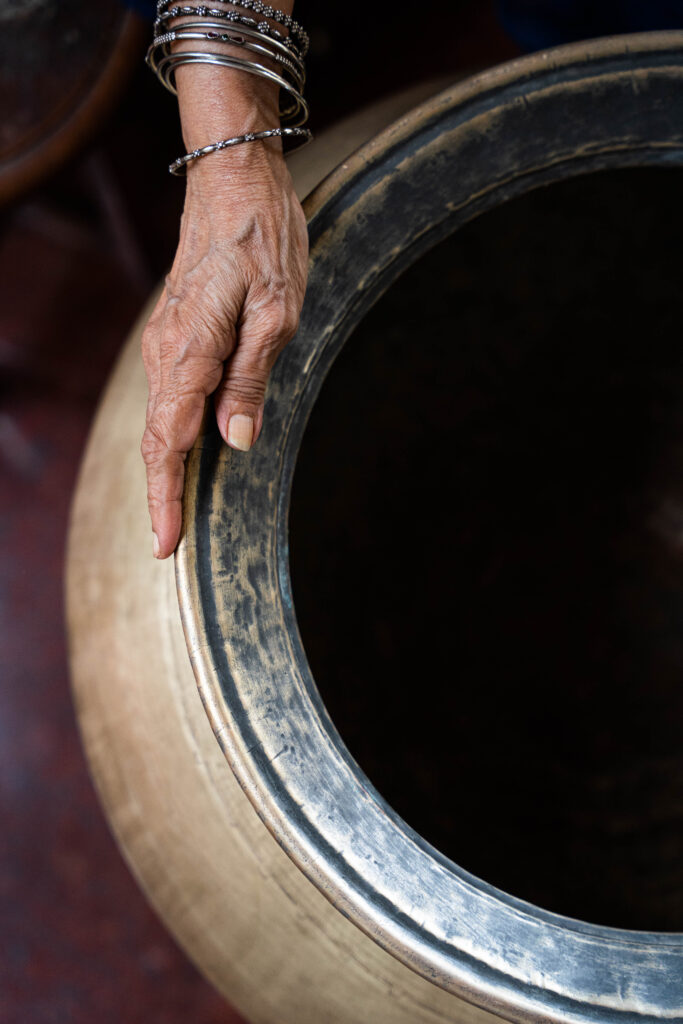
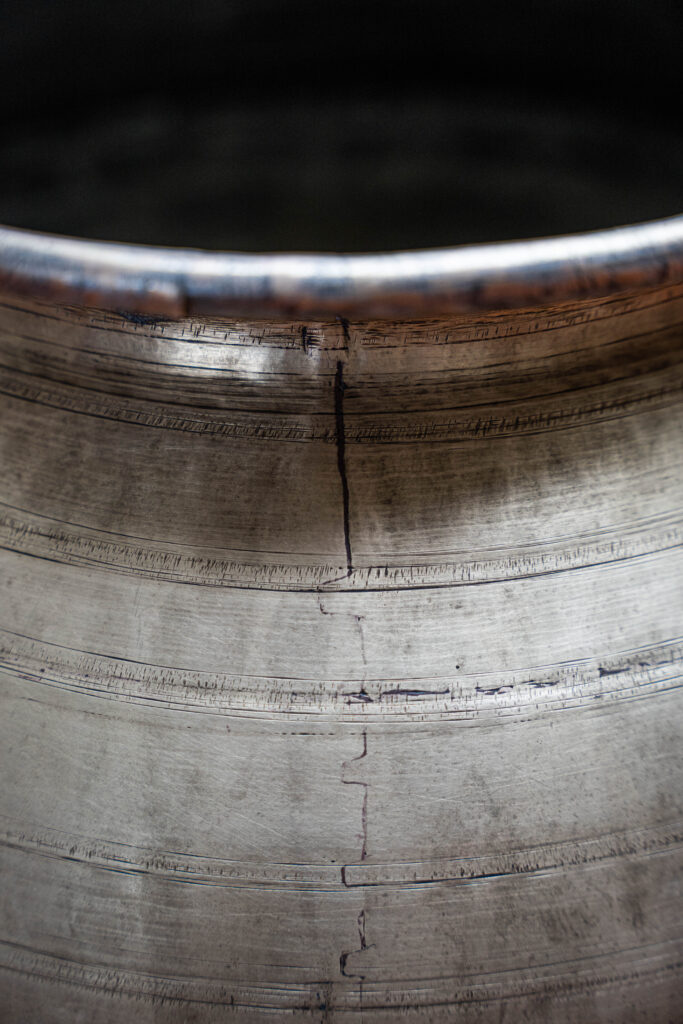
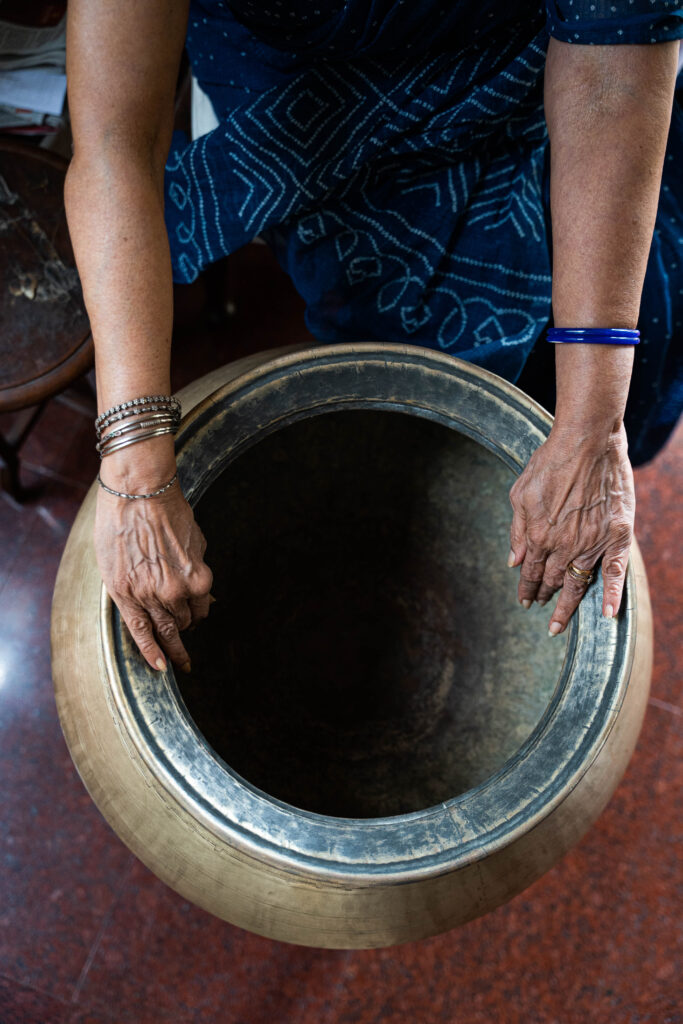
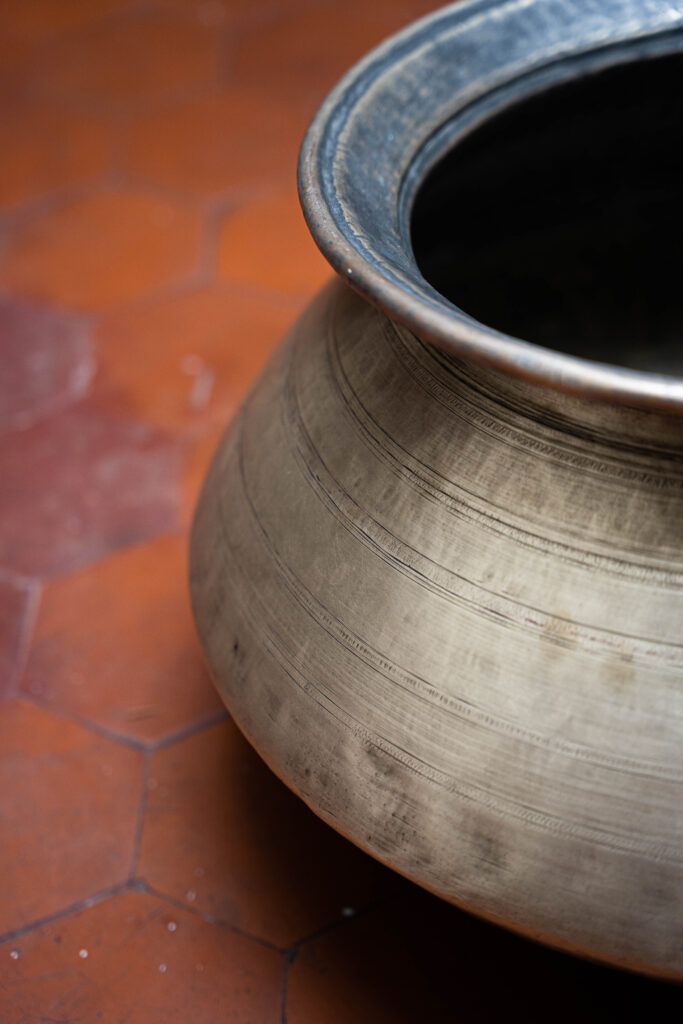
It was a role that Leela had perfected and perhaps not by choice. Over countless journeys between the wards and kitchen, and under continuous beads of sweat with bright red cheeks, Leela never once complained about her duties. She was selfless and fiercely devoted to doing what was best for her family. Sabita and her siblings appreciated the act of love that was their Mummy’s cooking, although they knew it emerged from sacrifice; a girl who had to adapt to and look after a readymade family, day after day. It was almost as if the pampered, ultramodern childhood she had was being compensated for. The aspirations she had just begun to form did not get the chance to leave the home she married into.
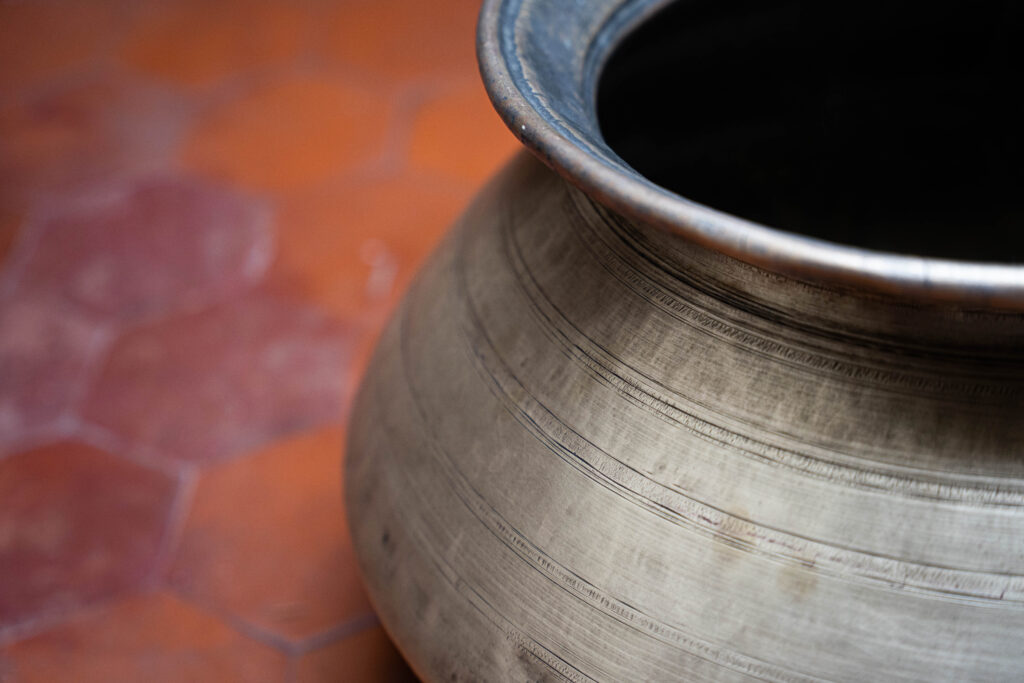
The precise origin of the dekchi is unknown, but it’s likely to have been procured in Bangalore close to 1926, before or around the time of Dr Chander’s first marriage. It made its way to Sabita in Chennai in 1974 when her parents were downsizing after they got older and no longer had a large family and home to feed. It is among the many objects that were passed down to her: a white marble circular table, a rosewood roll top desk, and a set of vengalam (an alloy of brass and copper) dishes; each of which Sabita considers precious, as it carried the memory of her family, and makes sure to preserve and make use of. Today the dekchi has two functions. It receives a terracotta pot and collects a bit of excess water from the weekly watering. It also serves as a gentle reminder of Mummy’s life and the generations of women who patiently, quietly, stood around to tend to the biryani in the dekchi.
This object is from a home in Madras. It’s part of a series in collaboration With Love, Madras, an upcoming book that explores the city through its homes.
